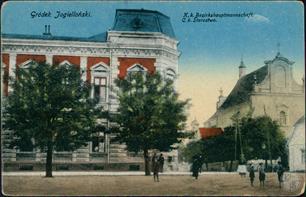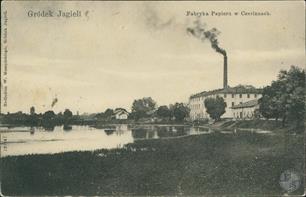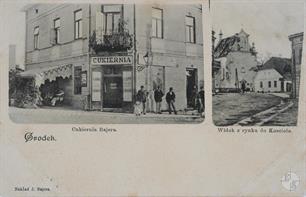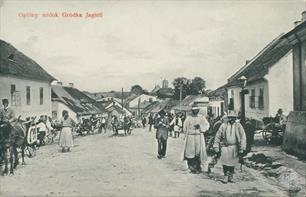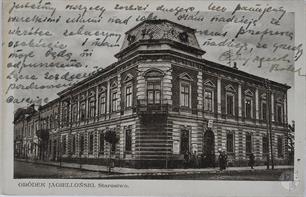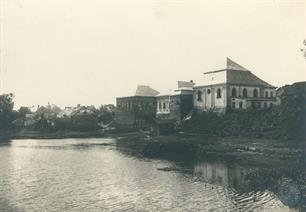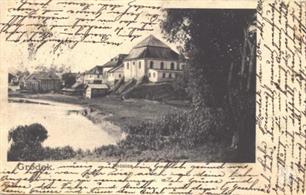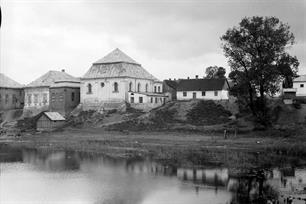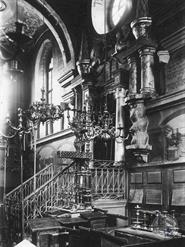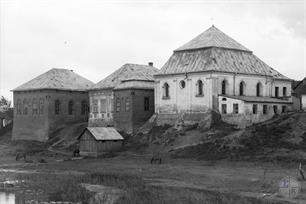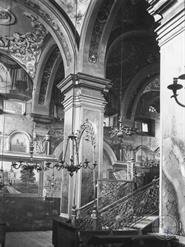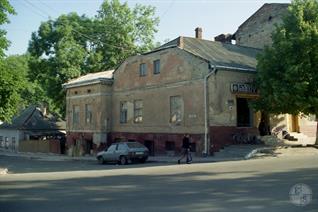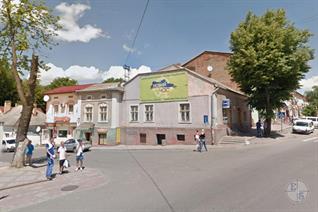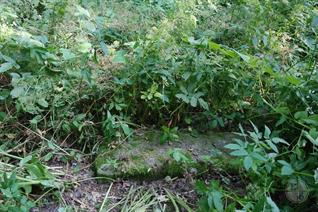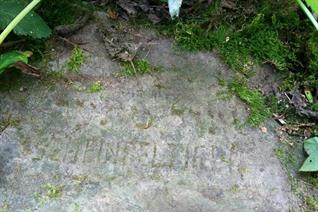Horodok
Lviv region
Sources:
- Jewish encyclopedia of Brockhaus & Efron
- Virtual Shtetl. Grуdek Jagielloński
Photo:
- Jewish Cemeteries Initiative. Horodok Jewish Cemetery
- Boris Khaimovich, Center for Jewish art. Rebbe's house in Horodok
- Biblioteka Narodowa Polona. Grodek Jagiellonski
- Światowid: ilustrowany kurjer tygodniowy. 02-06-1934, № 23, str. 12
- Jewish encyclopedia of Brockhaus & Efron
- Virtual Shtetl. Grуdek Jagielloński
Photo:
- Jewish Cemeteries Initiative. Horodok Jewish Cemetery
- Boris Khaimovich, Center for Jewish art. Rebbe's house in Horodok
- Biblioteka Narodowa Polona. Grodek Jagiellonski
- Światowid: ilustrowany kurjer tygodniowy. 02-06-1934, № 23, str. 12
The history of Jewish presence in Grodek Jagiellonski reaches back to the 15th century. The earliest mention of Jewish residents in the town dates to 1445. Despite a ban on Jewish settlement issued in 1550, they were also present in Gr?dek in the following century.
The Jewish community in Grodek experienced rapid development in the second half of the 17th century. According to the authors of The Geographical Dictionary of the Kingdom of Poland and Other Slavic Countries, the town was completely ruined after the Khmelnytsky Uprising:
“A few years after the war, the inspectors visiting the town in 1662 found 22 houses around the Market Square (there had been 78 before), and 10 at other streets (there had been 82 before).
Since the town was settled only by Catholics, Alderman Jan Gninski, the Chelmno Governor, began to set up a separate town for Jews in the castle gardens, which he named Gnin.”
A hundred years later, “the Jewish town of Gnin had 62 houses, 124 dwellers, 18 breweries, three manors and a wax manufacturing plant.”
In 1765, 788 Jews resided in Grodek.
The town boasted a large synagogue holding a valuable collection of books. There was also a beth midrash and a yeshiva.
The government of Joseph II opened a German-Jewish school, which existed until 1806.
The Jewish community in Grodek experienced rapid development in the second half of the 17th century. According to the authors of The Geographical Dictionary of the Kingdom of Poland and Other Slavic Countries, the town was completely ruined after the Khmelnytsky Uprising:
“A few years after the war, the inspectors visiting the town in 1662 found 22 houses around the Market Square (there had been 78 before), and 10 at other streets (there had been 82 before).
Since the town was settled only by Catholics, Alderman Jan Gninski, the Chelmno Governor, began to set up a separate town for Jews in the castle gardens, which he named Gnin.”
A hundred years later, “the Jewish town of Gnin had 62 houses, 124 dwellers, 18 breweries, three manors and a wax manufacturing plant.”
In 1765, 788 Jews resided in Grodek.
The town boasted a large synagogue holding a valuable collection of books. There was also a beth midrash and a yeshiva.
The government of Joseph II opened a German-Jewish school, which existed until 1806.
In September 1939, Grodek Jagiellonski was incorporated into the Soviet occupation zone.
On 29 June 1941, German troops entered the town. On the same day, local Ukrainians began to plunder Jewish houses, shops, and businesses.
The Nazi repressions were increasing day by day. The authorities ordered the establishment of a Judenrat, and all Jews were forced to perform slave labour for the occupier.
On 7 May 1942, several hundred Jewish residents of Grodek Jagiellonski were sent to forced labour camps.
On 13 August 1942, ca. 2,800 people were deported from Grodek and murdered in gas chambers in Belzec.
On 26 December 1942, the Germans drove 1,300 people out of the ghetto and murdered them.
The remaining Jews were murdered over the following months.
Forced labour camps for Jews continued to operate in Grodek Jagiellonski until May 1943.
Only ca. 20 Jewish residents of Grodek Jagiellonski lived to see the arrival of the Soviet troops.
On 29 June 1941, German troops entered the town. On the same day, local Ukrainians began to plunder Jewish houses, shops, and businesses.
The Nazi repressions were increasing day by day. The authorities ordered the establishment of a Judenrat, and all Jews were forced to perform slave labour for the occupier.
On 7 May 1942, several hundred Jewish residents of Grodek Jagiellonski were sent to forced labour camps.
On 13 August 1942, ca. 2,800 people were deported from Grodek and murdered in gas chambers in Belzec.
On 26 December 1942, the Germans drove 1,300 people out of the ghetto and murdered them.
The remaining Jews were murdered over the following months.
Forced labour camps for Jews continued to operate in Grodek Jagiellonski until May 1943.
Only ca. 20 Jewish residents of Grodek Jagiellonski lived to see the arrival of the Soviet troops.
Grodek Jagiellonski (Yiddish: Greiding; nowadays Horodok, Ukraine) was first mentioned by Nestor the Chronicler in the Primary Chronicle. The Galician–Volhynian Chronicle mentions that the King Daniel of Galicia came to Horodok with his forces to join Mstislav Mstislavich the Bold while they fought with Polish-Hungarians over the Galician land.
In the mid-14th century, together with whole Kingdom of Rus, the settlement was annexed by the Kingdom of Poland. Its name was changed to Grуdek, and it remained in Poland for the next 400 years. In 1372, King Jagiello founded here a Roman Catholic parish. During this reign, Grуdek also received Magdeburg rights.
In the mid-14th century, together with whole Kingdom of Rus, the settlement was annexed by the Kingdom of Poland. Its name was changed to Grуdek, and it remained in Poland for the next 400 years. In 1372, King Jagiello founded here a Roman Catholic parish. During this reign, Grуdek also received Magdeburg rights.
The Jewish population was 2,952 (29,18% of the total population) in 1880 and slightly increased to 3,610 (30,4% of the total population) in 1900.
By 1910, the number of Jewish inhabitants of the town increased to 3,866 people.
The Jewish population was strongly influenced by the Hasidim associated with the Belz dynasty.
The economic crisis of the interwar period had a severe impact on the situation of the Grodek Jewry. Lack of work and prospects, as well as the activities of nationalist political parties, contributed to the rise of anti-Semitic sentiments. At the same time, Zionist organisations and the ultra-Orthodox Agudath Israel party were gaining more and more followers in Grodek Jagiellonski.
After WWI, the Jewish population declined to 2,545 (24% of the total population) by 1921.
In 1927, a Bikur-Holim Society was established.
In 1931, the Jewish population was 3,281.
By 1910, the number of Jewish inhabitants of the town increased to 3,866 people.
The Jewish population was strongly influenced by the Hasidim associated with the Belz dynasty.
The economic crisis of the interwar period had a severe impact on the situation of the Grodek Jewry. Lack of work and prospects, as well as the activities of nationalist political parties, contributed to the rise of anti-Semitic sentiments. At the same time, Zionist organisations and the ultra-Orthodox Agudath Israel party were gaining more and more followers in Grodek Jagiellonski.
After WWI, the Jewish population declined to 2,545 (24% of the total population) by 1921.
In 1927, a Bikur-Holim Society was established.
In 1931, the Jewish population was 3,281.

- Home
- Shtetls
- Vinnytsia region
- Volyn region
- Dnipro region
- Donetsk region
- Zhytomyr region
- Zakarpattia region
- Zaporizhzhia region
- Ivano-Frankivsk region
- Kyiv region
- Kropyvnytskyi region
- Luhansk region
- Lviv region
- Mykolayiv region
- Odessa region
- Poltava region
- Rivne region
- Sumy region
- Ternopil region
- Kharkiv region
- Kherson region
- Khmelnytskyi region
- Chernihiv region
- Chernivtsi region
- Cherkasy region
- Crimea
- Synagogues
- Cemeteries
- Objects & guides
- Old photos
- History
- Contact
Jewish towns of Ukraine
Jewish towns of Ukraine
My shtetl
My shtetl
Donate
